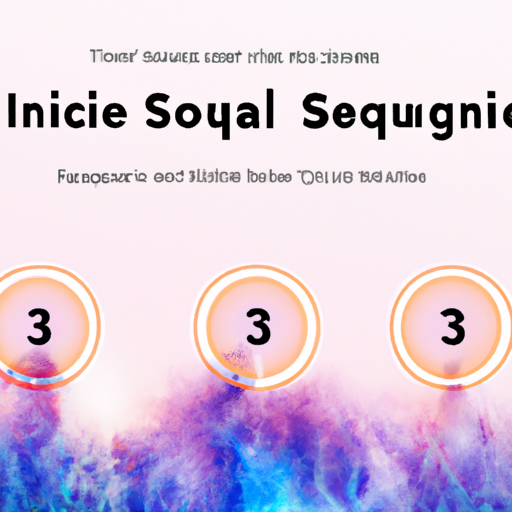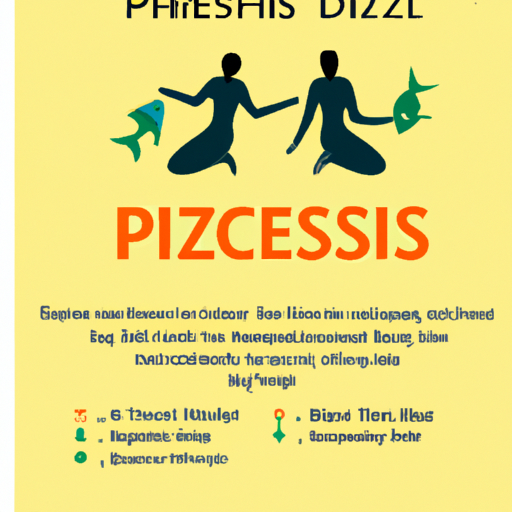 Have you ever had an overwhelming urge to travel to a specific country abroad? Are you captivated by a culture or have you always been intrigued by a particular historical era? Do you collect items or artifacts that represent ancient spiritual beliefs or mystical practices?
Have you ever had an overwhelming urge to travel to a specific country abroad? Are you captivated by a culture or have you always been intrigued by a particular historical era? Do you collect items or artifacts that represent ancient spiritual beliefs or mystical practices?
Our unexplained fascinations and quirky pastimes often unveil significant insights about our former existences.
Reincarnation has intrigued humanity since ancient times, presenting a thought-provoking exploration of life, death, and the journeys of the soul across various lifetimes. Our existence is seen not merely as a singular moment but as a continuous cycle of rebirth, learning, and growth.
This belief in reincarnation posits that our essence or soul is reborn into a new form following death.
Essential to Indian faiths like Hinduism, Buddhism, Jainism, and Sikhism, this spiritual doctrine also appears in specific branches of Judaism, among the indigenous nations of the Americas and Aboriginal Australians, as well as in neo-pagan faiths like Wicca.
Numerous mystical and esoteric traditions, including the Druze, Rosicrucians, Theosophy, and Anthroposophy, also weave concepts of reincarnation and soul evolution into their beliefs.
In Kabbalah, the spiritual discipline of Judaism, reincarnation is similarly central, described as gilgul neshamot, or the “cycle of souls.” Kabbalists convey that souls are reborn to attain spiritual rectification or tikkun, facilitating individuals to amend past life errors and fulfill their individual spiritual purposes.
Every aspect of one’s life – their mental state, health, relationships, and material accomplishments or failures – are all consequences set in motion by prior causes rooted in one’s background, be it in this life or past ones ~ Brad Steiger
Nonetheless, reincarnation transcends mere belief; a wealth of evidence exists supporting the reality of past lives from a variety of enthralling and often substantiated sources.
MEMORIES OF PAST LIVES
A particularly significant area of study involves young children recalling specifics from past lives, widely regarded by experts as some of the most convincing proof of reincarnation. These recollections frequently emerge spontaneously and comprise verifiable facts regarding individuals, locations, and occurrences from their former existences.
Children with memories of previous lives often guide their families to unfamiliar places or recognize individuals from their alleged pasts. When explored and validated, these instances substantiate reincarnation strongly, especially when their memories align with historical records and the children display similarities to the deceased in behavior or physical attributes. Numerous such cases have been authenticated through historical inquiries, such as those conducted by Dr. Ian Stevenson at the University of Virginia.
THE CASE OF JAMES LEININGER
One of the most renowned accounts of past life memory pertains to a young boy named James Leininger. At around the age of two, he began experiencing vivid nightmares about a plane crash. Gradually, he shared detailed memories about being a fighter pilot during World War II, including his name “James,” the model of the aircraft he flew (a Corsair), the name of the aircraft carrier he served on (“Natoma”), and specific aspects of his demise in a crash during combat near Iwo Jima that occurred between February 19 and March 26, 1945.
Initially doubtful, James’ parents conducted their research and were astonished to discover that all the details aligned with the real-life narrative of James Huston Jr., a WWII pilot who perished in action. The Leiningers even reached out to Huston’s surviving family to further authenticate young James’ memories. This case has been analyzed extensively and is frequently viewed as one of the most convincing instances of past-life recall, particularly given the precise and verifiable historical information James recounted.
PREGNANCY AND INFANTS
Pre-birth visions, birthmarks, and the actions of infants also provide critical indicators of previous lives. Souls may express their desire to reincarnate through vivid dreams experienced by mothers or other family members during pregnancy. These prophetic dreams frequently disclose aspects of the soul’s past identity, such as names, physical appearance, or significant events in their lives, confirming the link between past and present.
Moreover, actions, proclivities, or distinct traits displayed by newborns—such as specific tastes, fears, or characteristics—often mirror the personality or experiences of their former selves; similarly, birthmarks may reflect physical indicators carried over from prior existences, often corresponding to injuries or noteworthy incidents from that lifetime.
THE CASE OF RAVI SHANKAR
One well-known narrative linking birthmarks to prior lives is that of Ravi Shankar, born in 1951 in Kanauj, India. This case is among those cataloged by Dr. Ian Stevenson and is frequently referenced as strong proof of reincarnation, with the birthmark viewed as a tangible evidence of past life injury.
At age two, Ravi began expressing memories of having been fatally harmed in a former life via a throat cutting. He believed he was the reincarnation of Ashok “Munna” Kumar, a youth murdered in January 1951 in a nearby locale by two men intent on claiming his father’s estate. Ravi detailed Munna’s life, accurately identifying his murderers, articulating the crime scene, and recalling Munna’s possessions.
When Munna’s father, Sri Jageshwar Prasad, met Ravi, the child recognized him and recounted murder details that closely matched the case’s facts, including insights from a confession by one of the assailants. Notably, Ravi bore a birthmark on his neck resembling a long knife wound scar, coinciding with the injury that led to Munna’s death.
YOUNG PRODIGIES
Child prodigies, exhibiting exceptional abilities or talents at remarkably young ages, represent another captivating source of evidence for reincarnation. Many gifted youngsters show talents—such as advanced mathematical skills, exceptional musical artistry, or remarkable painting abilities—that are typically only observed in adults. These children often exhibit extraordinary knowledge or capabilities that they likely could not have acquired through conventional learning methods in their current youthful lives.
This phenomenon poses fascinating inquiries regarding the essence of intelligence and creativity, suggesting that some children inherit experiences and skills from their former lives that enable them to excel in specific domains from an early age. Therefore, prodigies may serve as potential reflections of reincarnation, emphasizing the continuity of the soul’s journey through different lifetimes and the notion that our talents may be shaped by prior experiences.
THE CASE OF WOLFGANG AMADEUS MOZART
A notable instance of a child prodigy frequently associated with past lives is Wolfgang Amadeus Mozart. By age five, Mozart was composing music and performing for royal audiences in Europe, demonstrating extraordinary talent beyond his years. He could spontaneously play multiple instruments with proficiency and exhibited an innate grasp of complex musical frameworks. His advanced abilities suggest he may have carried musical knowledge from a previous existence, providing a metaphysical rationale for his innate genius.
THE CASE OF MICHAEL KEARNEY
Another notable case of a child prodigy is Michael Kearney, born in 1984, who exhibited exceptional intellectual prowess from a very young age. He uttered his first word at just four months and was reading by ten months! By six years of age, he graduated from high school, and at ten, he completed his degree in anthropology from the University of South Alabama, making him the youngest individual to graduate from that institution.
Michael’s educational journey continued as he achieved multiple graduate degrees, including two master’s and a doctorate. While Kearney himself does not attribute his outstanding accomplishments to reincarnation, his rare intellectual gifts and early mastery of complex subjects may stem from previous lives.
PAST LIFE REGRESSION
Past life regression presents another intriguing method to retrieve memories of former lives through a guided experience using hypnosis. In a session, a skilled therapist assists the individual in reaching a relaxed state, allowing them to bypass the conscious mind and tap into the subconscious to explore memories from past incarnations.
During such a regression, individuals may encounter vivid visual, mental, and emotional impressions depicting specific events, settings, or individuals from previous lifetimes. These memories can illuminate current emotional patterns, fears, or recurring life challenges, permitting people to comprehend how previous experiences impact their present reality.
Consequently, regression therapy provides a transformative chance for healing and personal advancement by revisiting unresolved traumas, patterns, or relationships from their bygone lives, granting insights into karmic cycles or lessons the soul is meant to learn. This often leads to emotional release, enabling individuals to tackle deep-seated issues or phobias lacking a clear origin in their current life. With the understanding gained from past life regression, individuals can proceed with enhanced clarity, aligning themselves more fully with their spiritual paths and engendering constructive changes in their present experiences.
THE CASE OF ROBERT SNOW
The story of Robert Snow’s past life regression stands out as one of the most fascinating examples of validating past life memories through regression. Snow, a skeptical police detective from Indianapolis, underwent past life regression as part of an experiment and unexpectedly retrieved vivid details of a previous life as a 19th-century artist.
During the session, he recounted specific memories, including painting a woman’s portrait, distinctive studio settings, and facets of his personal life. Seeking to disprove the validity, he conducted thorough research and was unexpectedly able to find a painting in a New Orleans gallery that mirrored the one he remembered from his regression session. Although some names mentioned were inaccurate, the precision of many specific details about the artwork and the artist’s life led Snow to believe in the authenticity of his past-life recollections. His case is frequently referenced as strong evidence for reincarnation.
THE CASE OF BRIDEY MURPHY
The Bridey Murphy case emerged as another famous incident of past-life recall in the 1950s, capturing public intrigue. In a series of hypnotherapy sessions, a woman named Virginia Tighe recalled a life as Bridey Murphy, an Irish woman from the 19th century.
Throughout her regressions, Tighe vividly described Bridey’s life experiences, including her childhood, marriage, and time spent in Ireland, giving precise names, locations, and cultural practices. Intrigued by her accounts, journalists and researchers endeavored to validate her assertions, ultimately discovering elements that appeared to align with historical records of a Bridey Murphy in County Antrim, Ireland.
This case ignited widespread fascination with past life regression and reincarnation, stimulating discourse regarding memory’s nature and the potential for reincarnation, leaving a lasting imprint on both popular culture and the hypnosis field.
THE MICHAEL NEWTON CASES
Dr. Michael Newton’s renowned works feature several thought-provoking instances of past life regression. Newton, who passed away in 2016, is recognized for developing the Life Between Lives (LBL) spiritual regression method, extensively detailed in his writings and practiced for many years. Prior to retirement, he established the Newton Institute to train and certify hypnotherapists in his methods.
Dr. Newton maintained a busy practice, guiding individuals in breaking free from addictions and other psychological issues. He created this technique to assist clients in exploring their souls’ journeys between lives. Under hypnosis, they recounted memories and experiences from their time in-between incarnations.
Numerous clients, unfamiliar with one another, shared comparable experiences. They often described being in a circle of souls, recognizing some as kin or friends from their current realities and grasping their relationships at a soul level. Newton’s regression sessions were not solely exploratory; they provided therapeutic benefits. Patients achieved deeper understandings of their life challenges and connections, aiding them in resolving personal matters.
Newton’s work also delved into how past life memories could elucidate unexplained fears and anxieties in the current time. This was particularly pertinent for individuals who had apprehensions seemingly unrelated to their present life experiences. His contributions significantly impacted the domain of spiritual regression, enlightening many regarding their soul’s journey. Those interested in his work may find his books Journey of Souls and Destiny of Souls to be excellent resources.
GENERAL PAST LIFE READINGS
Past life psychic readings can yield profound insights into an individual’s previous existences by accessing non-physical sources of knowledge, including the Akashic Records, ancestral karma, and their energy field. Certain psychics and mediums may access specific past life memories or channel impressions from previous incarnations that continue to influence an individual’s current life.
In a past life reading, the psychic may depict experiences, emotions, or significant events from earlier lives that resonate with the person’s current challenges, experiences, or relationships. These specifics can offer context for recurring patterns, skills, or unresolved matters that seem inexplicable within the confines of the present life alone.
Through such a reading, psychics and mediums can provide valuable insights to guide individuals in comprehending their current life paths and mending karmic lessons carried over from previous existences. Moreover, past life psychic readings can grant clients a more profound sense of their soul’s journey and spiritual evolution across numerous lifetimes.
By unveiling key past life experiences, a past life psychic can assist you in unlocking hidden memories and soul-level lessons vital for your personal and spiritual growth. This might entail understanding soul connections with others, like family or partners, who played roles in your past life. Recognizing these relationships and unresolved karmic patterns may afford clients a sense of closure or insight, enabling them to make more conscious decisions and advance on their spiritual paths in this life.
A CASE FROM MY OWN EXPERIENCE
I once assisted a client who, whenever feeling anxious or threatened, would reflexively mimic a motion as if grabbing a sword or weapon for self-protection. Upon exploring this during a reading, I perceived that his most recent past life was set in medieval England. I envisioned him as a horseback soldier during a battle, attempting to draw his sword from its sheath for defense but ultimately falling off the horse and dying before he could achieve it. He carried that ultimate physical response into this lifetime.
My knowledge of medieval history was limited, so I could not specify a certain era or location within my visions, other than that it took place in medieval Britain, where he fought under a famous warrior king from the era of the legendary King Arthur. A significant aspect I observed was a “white dragon,” which later assisted him in uncovering relevant historical information.
Following the reading, he conducted further research and now believes that the king I saw may have been Cynric, King of Wessex, an historical figure from the early Anglo-Saxon period. This belief arose since the banner of the King of Wessex supposedly featured a white dragon. It is plausible this banner flew over the battlefield at the time of his demise.
My client also learned that during Cynric’s reign, the Anglo-Saxons engaged in multiple sieges against the native Britons, contextualizing his potential part in those events. Through the reading, he achieved a more profound sense of closure, allowing him to better understand, process, and resolve the energy imprint of this ancient trauma.
THE CASE OF ARTHUR LEMMERS
One of the most renowned cases of past life readings involves Edgar Cayce, known as the “Sleeping Prophet.” Cayce holds the title of the most thoroughly documented psychic in history, having recorded over 14,000 readings throughout his life.
One compelling past life reading given by Cayce involved a man named Arthur Lammers. Lammers was an affluent printer and metaphysical student who sought Cayce’s insights in the 1920s. During the reading, Cayce described Lammers’ previous life as a monk in 11th century France. Specifics about the monastery, the monk’s responsibilities, and relevant historical context were included in the reading.
Many of the details conveyed by Cayce were subsequently validated when his descriptions of the monastery’s layout, the monk’s daily tasks, and the historical events of that period corresponded well with established historical documentation. This instance, among several others, contributed to establishing Cayce’s reputation for accessing past life data via the Akashic Records. The work with Lammers also signaled the beginning of Cayce’s exploration into reincarnation and the karmic journey of souls, impacting his subsequent teachings.
DÉJÀ VU
Déjà vu, the strong impression of having encountered a situation previously, often provides fleeting insight into a past life. This experience arises when we come across a location, person, or event that prompts soul memories from earlier lives. We may feel a unique familiarity that is both profound and perplexing.
These déjà vu instances connect us to the soul’s history, offering access to recollections residing outside the conscious mind. They frequently remind us of unresolved lessons or connections from past lives that continue to shape our present existence. By delving deeper into these experiences, we can gain better insights into our soul’s journey and the themes influencing our current life experiences.
THE CASE OF JENNY COCKELL
A well-known scenario of déjà vu and past life memory is that of Jenny Cockell in England. She repeatedly experienced intense déjà vu and dreams related to a previous life as an Irish woman named Mary Sutton. These recollections started in her youth and continued into her adult years. She remembered precise elements of Mary’s life, including her home, family, and the village she resided in.
Intrigued by these memories, Jenny opted to explore further. She traveled to Ireland and discovered the village depicted in her dreams. Remarkably, she was able to locate the children of Mary Sutton, who verified many of the specifics Jenny had recalled. This case is commonly cited as an incredibly compelling instance of past life recognition.
Everyone has dreams and unconscious memories; only our beliefs may hinder our openness to past life recollections. A mentor of mine once stated that the more we meditate, the easier it becomes to perceive and remember our past lives. When I encounter individuals, I frequently psychically sense their name from a previous life and the nature of their work. Some claim they feel the hair on their arms and neck rise, or they get goosebumps everywhere!
It appears that one’s soul essence or identity remains quite consistent from life to life until we navigate specific karmic and spiritual lessons. The metaphor, “life is a school and the lesson is love,” poignantly encapsulates our investigation into past lives.
Exploring and aligning with past life memories can be transformative. It can empower us to reclaim lost aspects of ourselves while approaching life with heightened wisdom, compassion, and even humor. If you were to realize fully, through direct experience, that your essence has existed across numerous lifetimes in diverse forms, while your soul remains eternal, how would this knowledge alter your current life?
|
 About The Author: Isadora About The Author: Isadora
Known as The Psychic’s Psychic, since 1998, Isadora has read for thousands all over the world, her impressive list including clients from the Obama administration, Fortune 500 CEO’s and notable names in Hollywood. Her detailed (Gemini) accuracy is nothing short of astounding, with her ability to see people at the Soul Level and clearly answer questions on a wide range of subjects, from relationship matters, business decisions, to past lives, etc.—anything that requires clear answers and pin-point insight. She has the ability to identify hidden patterns that run beneath your current situation, providing you with information to positively change your future. If you’d like a reading with this compassionate, straight forward, laser-accurate and dedicated Psychic, you can find Isadora at PsychicAccess.com.
|
Explore Captivating Evidence of Reincarnation and Past Lives
The notion of reincarnation, which posits that the soul is reborn into a new body following death, has intrigued people for centuries. While it remains a subject of controversy and disbelief, an increasing body of evidence points to the reality of past lives. From compelling personal narratives to scientific explorations, these findings question our conventional understanding of existence and mortality.
One of the most captivating pieces of evidence stems from children who assert they recall previous lives. These instances, often scrutinized by researchers and psychologists, unveil astonishing details that these children could not have accessed through standard means. For instance, certain children precisely remember specific locations, names, and events from different times and places, which are subsequently validated as correct historical facts.
A well-known narrative is that of James Leininger, a young boy who professed to recall being a World War II pilot. At merely two years old, James began experiencing haunting nightmares concerning being shot down in an aircraft. He would yell out names such as “Corsair” and “Natoma,” subsequently recognized as parts of a WWII airplane and the name of a naval carrier. James also accurately depicted the particulars of his plane, the skirmishes he took part in, and even identified his former comrades in vintage photographs. This case, along with many others, offers compelling evidence that consciousness can persist beyond death and transition into a new existence.
Another avenue of evidence is found in those who undergo past-life regression therapy. This therapeutic approach, performed under hypnosis, enables individuals to unlock memories and experiences from their previous existences. Many people have disclosed vivid and detailed memories from past lives during these regression sessions. Frequently, these narratives include precise historical details, cultural customs, and languages the individual has no familiarity with in their current life.
One remarkable case concerns Bridey Murphy, a woman who, while under hypnosis, recalled her life as an Irish citizen named Bridget. During the sessions, she articulated fluently in an Irish accent and provided thorough information about her 19th-century life. Although skeptics may argue that these memories could stem from fabrication or suggestion, the consistency and accuracy of the details presented by individuals undergoing past-life regression cannot be easily disregarded.
Scientific inquiry has made considerable contributions to the mounting evidence surrounding reincarnation. Dr. Ian Stevenson, a psychiatrist and researcher, devoted his career to exploring cases of past-life memories in children. He meticulously chronicled over 3,000 instances globally, gathering detailed insights into each child’s recollections and verifying them against historical data. His work unveiled patterns and consistencies that strongly imply the presence of past lives.
Moreover, breakthroughs in quantum physics offer exciting possibilities for grasping the concept of reincarnation. The theory of quantum consciousness posits that consciousness is not solely confined to the brain; instead, it exists as a fundamental component of the universe. This theory hints that consciousness might indeed transcend physical death and potentially be reborn into new forms.
While the evidence supporting reincarnation and past lives continues to grow, it is crucial to approach the topic with an open mind and critical analysis. Healthy skepticism promotes thorough investigation and evaluation of the evidence. However, dismissing these accounts without diligent inquiry would undermine the quest for knowledge and understanding.
Whether one embraces belief in reincarnation or not, the captivating evidence derived from personal stories, past-life regression therapy, scientific studies, and quantum phenomena challenges our current perceptions of life and mortality. Investigating these experiences can lead to a deeper appreciation of the enigmas of human consciousness and the potential for existence beyond our present lives. Continue reading →













